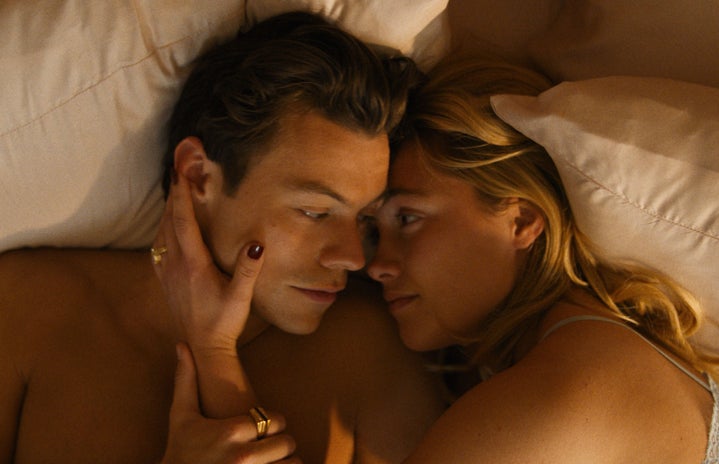After being surrounded by months of speculation and drama surrounding the film, this past week I was finally able to see the highly anticipated Don’t Worry Darling. Though highly criticized by viewers for its overly saturated plot and questionable casting choices, neither of these things captured my attention as much as a single motif that carries on throughout the film. That motif? The art of ballet.
Victory, the town in which the film is set in operates on a single philosophy: progress is the goal, and the opposite of that goal is chaos. This philosophy is put to the test when Alice, Florence Pugh, starts to realize Victory isn’t the “perfect suburb” she has been led to believe. While this operating mindset is verbally said and repeated throughout the film, Director Olivia Wilde also visualizes this descent into chaos with the help of ballet.
Besides shopping, one of the main activities the wives of Victory love to partake in is ballet. At the beginning of the film, we see Alice attending a rather intense ballet class. The instructor, Gemma Chen, is carefully eyeing all the women, critiquing any and every little movement they might get wrong. This pinpoint accuracy is vital to the art of ballet. It operates on order, precision, and togetherness. In ballet, there is no room for individualism. There is an objective right and an objective wrong way to perform a step. However, in its identicalness, there lies its beauty. This is the philosophy of Victory.
Everyone looking a certain way, acting a certain way, and behaving a certain way is what gives Victory its beauty. Or so it’s thought.
After the movie continues and Alice becomes more and more aware that something just isn’t right, she does the unthinkable in Victory, she breaks out of the collective; one of the first examples we see of this is in her ballet class. Believing she sees her friend, in her reflection rather than herself, she approaches the glass, only to find her find beginning to bang her head repeatedly on the mirror, breaking the glass. After finally “breaking through” Alice screams, interrupting the entire class’s performance. Just as Alice disrupted the orderliness and beauty of the dance, so too did she disrupt the “progress” and beauty of Victory.
As we are immersed in Alice’s mental breaking during Frank’s party, we see Alice recognize the woman on stage, a dancer. Ever since she first began feeling as though something was wrong in the town of Victory, Alice began having strange dreams. The most recurring dream is a black and white, filled with 1920 styles dancers all moving their bodies in fluidity with each other, creating images, most important, an eye. All while Frank, the town’s “leader” gives a monologue about the philosophy of Victory and what it represents.
Once again we see the use of dance as a symbolic aid in monologue. However, this symbolism reaches its full potential once the audience is made aware that Alices’ dream is no dream at all, but a real recording being played as she lays captive in her husband’s home.
Just as Olivia used ballet as a symbol for Victory’s values, “Frank” himself used dance as visual hypnosis for the world of Victory. The score, soundtrack, and cinematography complement this creative direction excellently and adds a great deal of depth to the motif. While Don’t Worry Darling does have its flaws, its use of symbolism, especially through the continued use of Ballet (and dance as a whole), is definitely a strong point of the film.


